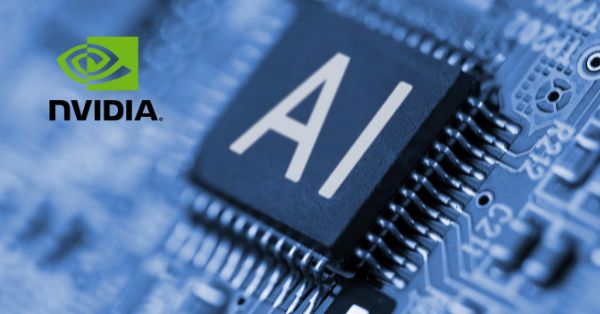Google Mixboard: AI mood boards for visual ideation
Google Labs has launched Mixboard, an AI-powered concepting board that turns text prompts and images into editable visual mood boards now available in U.S. public beta.
How Mixboard works and key features
Mixboard gives users an open canvas to generate, arrange, and iterate on visual ideas, from home decor and event themes to product inspiration and DIY projects. You can start from a text prompt or prebuilt boards, pull in your own images, create new visuals with generative AI, and refine them using natural-language edits. Google is also showcasing a new image editing model, Nano Banana, to handle small changes, composite work, and more complex edits that aim for realistic results. One-click options let you spin up fresh variations or generate similar concepts, and the system can draft text based on the context of images on the board.
Availability, beta access, and target users
Mixboard is an experiment under Google Labs, open to U.S. users as a public beta. Google is nudging early adopters to a community channel for feedback and iteration. The move follows strong consumer momentum for Gemini on mobile and steps into a category popularized by Pinterest and newer collage and mood board apps that went viral with Gen Z creators.
Mixboard’s business impact: product, marketing, and platform strategy
Mixboard signals how fast multimodal AI is moving from chat to visual ideation, with implications for search, commerce, and collaborative workflows.
From prompts to shopping intent
Visual exploration is upstream of buying decisions, and mood boards often turn into product shortlists. By owning the ideation canvas, Google can capture high-intent signals before users search, compress the journey from inspiration to action, and potentially route traffic into Shopping, Maps, YouTube, and partners. Expect tighter hooks into Google’s retail graph and advertising stack over time.
From consumer adoption to enterprise workflows
What starts as a consumer tool often becomes a team workflow. Agencies, product teams, and merchandisers already use boards to align on concepts; adding generative image and context-aware text reduces cycle times. If Google connects Mixboard to Drive, Workspace, and Gemini for Workspace, it could become a lightweight creative OS for brainstorming, reviews, and briefs.
Competitive landscape and positioning
Pinterest’s collage features and the Shuffles app proved mood boards are sticky, particularly with younger users. Canva and Adobe are embedding generative capabilities into design workflows, while startups like Verse helped define AI-first collage experiences. Mixboard leverages Google’s distribution and models to come in with an end-to-end generate-edit-iterate flow, potentially shifting discovery behavior and ad budgets.
Technology behind Mixboard: multimodal generation and editing
The launch highlights where Google sees differentiation in multimodal generation and real-time editing cycles.
Nano Banana image editing as a differentiator
Nano Banana is positioned to deliver fine-grained, realistic edits and compositing via natural language. That capability turns the canvas into an interactive loop: generate, tweak, restyle, and recombine with minimal friction. For enterprises, the key question is controllability—style adherence, brand palettes, and constraint handling for product-accurate visuals.
Context-aware copy generation from images
Mixboard can draft titles, tags, or descriptions based on the board’s visual context. This is a step toward multimodal understanding where imagery informs copy, briefs, or product lists. Expect retrieval from catalogs or knowledge bases to follow, enabling boards to snap to real inventory, SKUs, or brand guidelines.
Performance, cost, and delivery roadmap
Interactive editing favors low-latency inference and efficient image pipelines. While Mixboard runs in the cloud today, the natural roadmap includes on-device or edge-assisted features on capable hardware to cut round trips and keep sensitive assets local. Telcos and clouds should watch for model distillation, edge GPU footprints, and caching patterns as usage scales.
Provenance, rights, and safety controls
Enterprises will look for watermarking and C2PA-style provenance, license-aware generation, and configurable safety rails. As mood boards cross from inspiration to marketing outputs, governance over sources, rights, and disclosures becomes non-negotiable in regulated markets.
What Mixboard means for telecom, cloud, and enterprise IT
Mixboard is a visible use case for low-latency, high-iteration multimodal apps that stress both AI and network layers.
Network and edge compute opportunities
Generative workflows drive bursty, visual-heavy traffic and benefit from proximate compute for snappy edits. Carriers and edge cloud providers can productize “creative edge” profiles—GPU-enabled zones, peering optimizations with Google’s network, and traffic shaping for real-time collaboration. This aligns with broader 5G MEC initiatives serving retail media, agencies, and commerce platforms.
Retail and commerce activation with shoppable boards
Retailers and marketplaces can pilot shoppable boards tied to catalogs, with price and availability overlays and one-click handoff to carts. Telcos with advertising businesses can use boards for campaign pre-vis, dynamic creative assembly, and content testing at scale. Attribution loops from board to conversion will be a differentiator.
Android OEM and channel opportunities
Android OEMs can bundle mood board workflows with stylus-enabled devices or foldables, leaning on local acceleration where feasible. Operators can package data plans and cloud storage tiers optimized for creative collaboration as part of SMB bundles.
Security, privacy, and IP requirements
Enterprise adoption hinges on private modes, data residency, content scanning, and rights management. Look for domain restrictions, asset vaults, and integration with DAM, MDM, and DLP systems before scaling beyond pilots.
Next steps for businesses
Treat Mixboard as a low-friction test bed for multimodal ideation while you prepare the guardrails and integrations for production use.
Run targeted pilots and measure impact
Marketing, CX, and product teams should trial Mixboard for concept sprints and creative briefs, measuring time-to-first-concept and iteration speed. Use branded palettes and prompt libraries to standardize outputs.
Integrate Mixboard with your stack
Map handoffs from boards to DAM, project management, and commerce systems. Define human-in-the-loop checkpoints and rights reviews. Establish policies for asset sources and disclosure of AI-assisted materials.
Quantify infrastructure and GPU impacts
Work with network and cloud teams to model latency, storage, and GPU costs under realistic usage. Evaluate edge options for high-cadence editing sessions, especially for distributed teams and retail stores.
Key signals and roadmap to watch
Track how Google hardens Mixboard from a Labs experiment into a platform that enterprises can trust and extend.
Roadmap, integrations, and ecosystem
Watch for Workspace and Drive integration, enterprise controls, export formats, and APIs or SDKs for embedding boards into apps. Monetization tiers will reveal target segments and service levels.
Provenance, policy, and compliance
Monitor watermarking defaults, C2PA adoption, license filters, and regional compliance updates tied to emerging AI regulations. Clear provenance will be table stakes for paid media and retail.
Competitor responses to watch
Expect Pinterest, Canva, and Adobe to deepen multimodal features and commerce hooks. Marketplace tie-ins and affiliate models could influence where inspiration turns into transaction.
Bottom line: Mixboard compresses inspiration to action
Mixboard is a timely push into multimodal ideation that compresses the path from inspiration to action, and it gives Google a new surface to capture intent while showcasing its image editing stack.
For telecom and enterprise leaders, the opportunity lies in enabling low-latency creative experiences, wiring them to commerce and collaboration, and enforcing provenance and policy from day one. Pilot now, measure impact, and build the connective tissue to make mood boards a repeatable, governed part of your creative and shopping workflows.








































